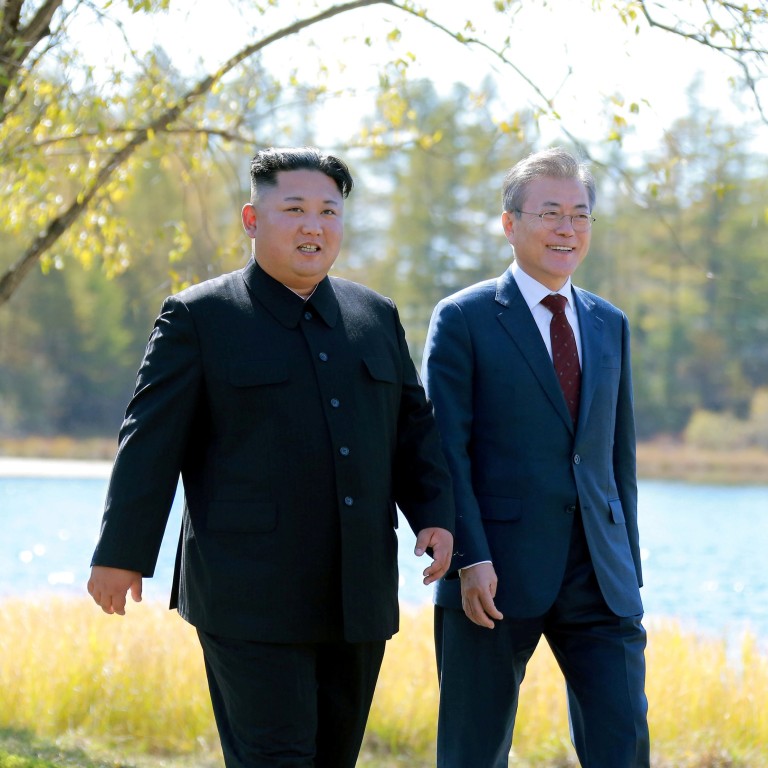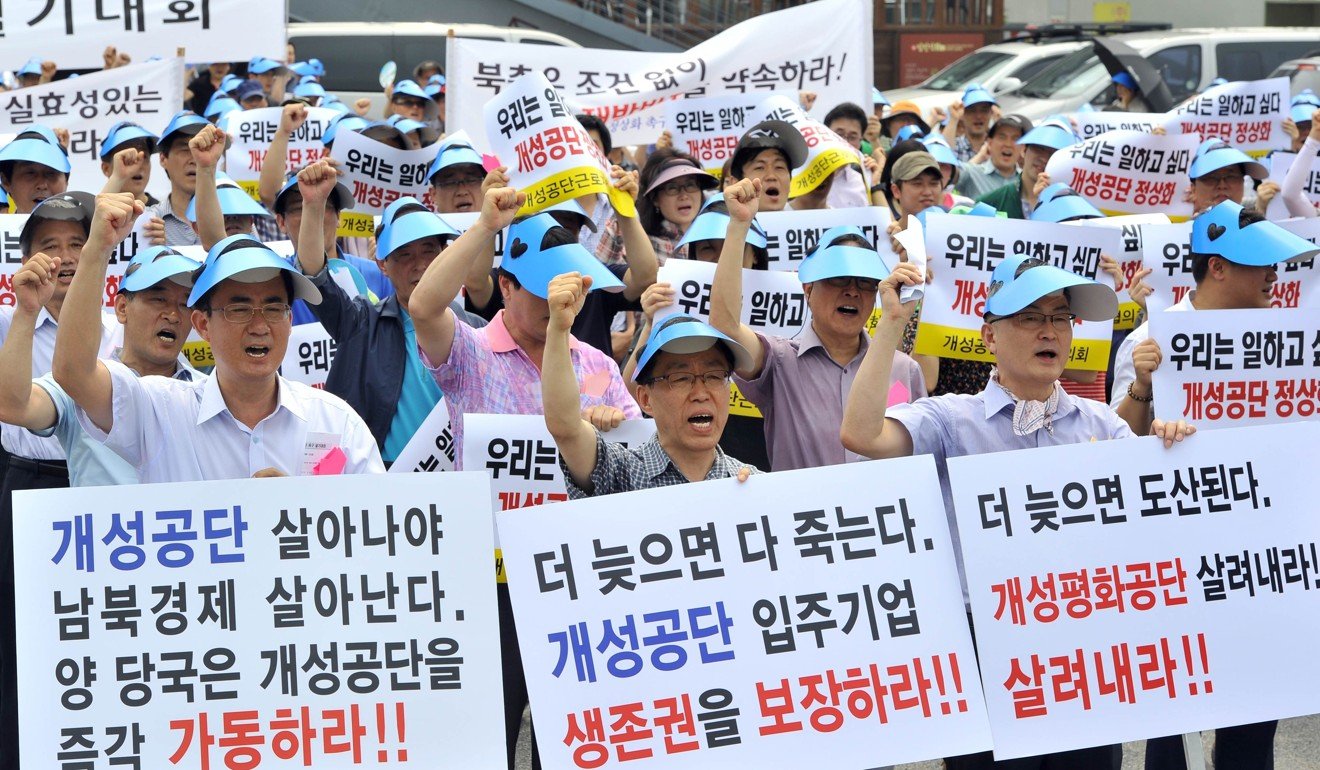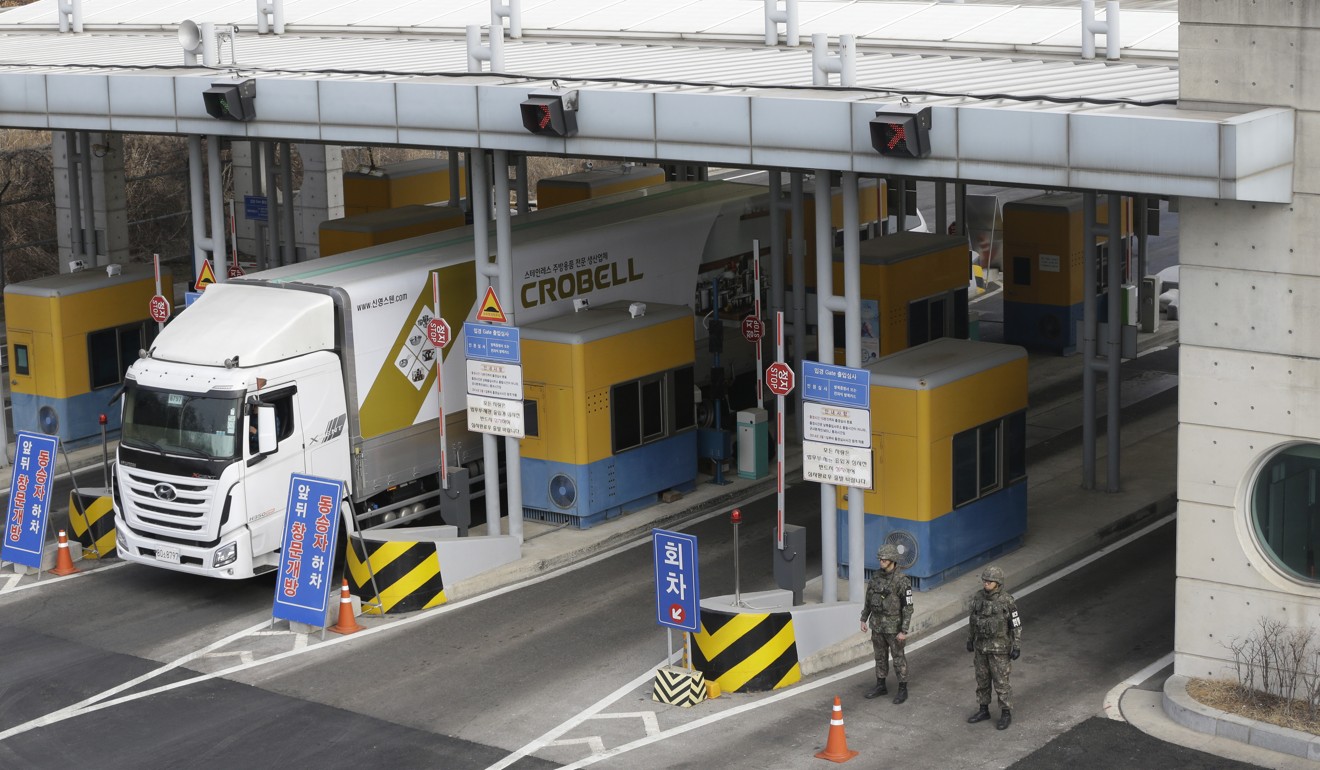
Kim and Moon want to resume joint Korean projects – but the US has to agree first
- The North Korean leader’s offer to reopen the Kaesong industrial estate and resume tours to scenic Mount Kumgang has been welcomed by the South
- But the Moon administration is constrained by layers of UN sanctions on Pyongyang, which the US is reluctant to remove without denuclearisation
Moon is eager to address this demand, but his government is constrained by layers of United Nations sanctions imposed on the North over its nuclear and missile programmes, which the US is reluctant to remove without denuclearisation.
“We welcome North Korea’s intention to resume their operation without conditions or compensation,” Moon said in his New Year address.
“My administration will cooperate with the international community including the United States to resolve the remaining issues such as international sanctions as soon as possible.”
Moon Jae-in urges North Korea to take ‘bold measures’ to denuclearise but insists US must take ‘reciprocal’ steps of its own
When Moon and Kim met in Pyongyang in September for their third summit, they agreed to “normalise” the operations of Kaesong as well as the suspended Mount Kumgang tour programme “as soon as conditions are met”.
In his New Year’s speech last week, Kim said he was willing to reopen the major inter-Korean projects without any preconditions, citing the hardship being suffered by South Korean businessmen.

Kaesong and tours to Mount Kumgang were the two most significant projects that came out of a landmark inter-Korean summit in 2000 between then-South Korean president Kim Dae-jung and the late North Korean leader Kim Jong-il, the father of the hermit nation’s current leader.
Tours to Mount Kumgang, near the eastern part of the Koreas’ border, began in 1998, led by South Korea’s Hyundai Asan – a subsidiary of the Hyundai business group founded by the late Chung Ju-yung, a legendary North Korea-born businessman.
The tours were suspended indefinitely in 2008 after a 53-year-old South Korean tourist was shot dead after she strayed into an area deemed off-limits except for military purposes.
Is Vietnam set to host the long-awaited second summit between US President Donald Trump and North Korea’s Kim Jong-un?
In 2016, the South’s conservative then-president Park Geun-hye unilaterally closed the symbolic Kaesong industrial estate in response to the North’s nuclear and missile tests, sparking strong protests from the North as well as South Korean businesses operating plants there.
More than 53,000 North Korean workers had been hired by the 123 South Korean companies operating at Kaesong, mostly labour-intensive small- and medium-sized firms.
“We really miss the North Korean workers. As they seldom changed their jobs, they had better chances to become skilled hands than their peers in Southeast Asian countries,” Jeong Gi-seob, head of the association of South Korean business firms in Kaesong, told the Post.

“We invested many years to train them and the skilled workers are the biggest loss we suffered from the unilateral closure of Kaesong.”
At its peak in 2015, the sprawling industrial zone produced goods worth 2 trillion won (US$1.8 billion), paying only 100 billion won in wages to North Korean workers.
Their average monthly wages were less than US$200, a mere fraction of what ordinary South Korean workers earn.
Operations at Kaesong, which commenced in 2004, were affected by the development of the North’s nuclear programme. Access to the industrial estate was limited from 2008 to 2010, and it was closed for more than five months in 2013 before its shutdown in 2016.
How instant ramen became a shrine to workers’ rights in South Korea
According to Jeong, South Korean companies have lost some 1.5 trillion won since Kaesong closed, a third of which they managed to recoup with insurance and government compensations.
“We earnestly hope the United States exempts Kaesong from sanctions to have Kaesong reopen,” Jeong said, calling the project “humanitarian” as it supported the livelihoods of tens of thousands of North Koreans.
Aside from Kaesong, tours to the North’s Mount Kumgang were the other linchpin supporting then-blossoming inter-Korean ties.

In 2007 alone, before the South pulled the plug on the tours in 2008, some 350,000 people visited the area.
By giving North and South Koreans a chance to rub shoulders, the two projects played crucial roles in narrowing gaps in mind and culture between the Koreas, divided for more than seven decades.
A spokesman at tour operator Hyundai Asan said the average South Korean tourist paid 400,000 won for a three-day package tour to the resort, which included meals, hotel rooms and even a popular North Korean circus performance.
“At first, North Korean authorities there were rigid toward South Koreans, but as time passed, they gradually became soft and friendly,” the spokesman said.
North Korea’s Kim Jong-un takes train to Beijing for talks with Chinese President Xi Jinping
Ji Jung-nam, a businessman in his 70s, recalled his first visit to the resort in 2004 with mixed feelings.
“North Korean guards were polite toward us but they were strict in enforcing regulations to protect the environment from swarming South Korean tourists,” he said.
But beyond the wire fences separating tourists from their North Korean neighbours, he saw signs of poverty.
“There was an ox-driven cart, and stacks of firewood piled outside the doors of flats,” Ji said, an indication that these flats had no modern heating system. “I just felt sorry for them. But at the same time, I also worried the pristine natural beauty would be tainted by tourists.”

